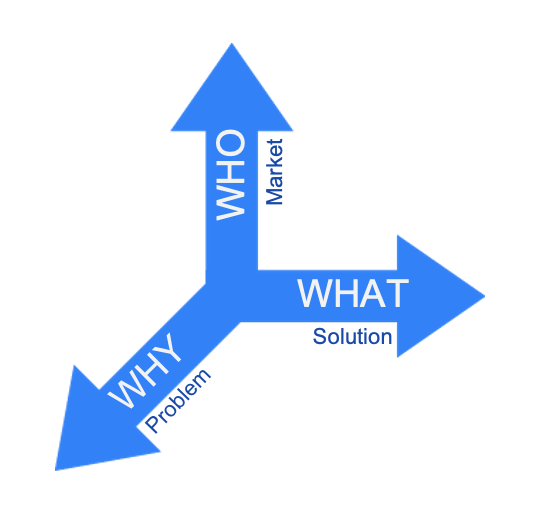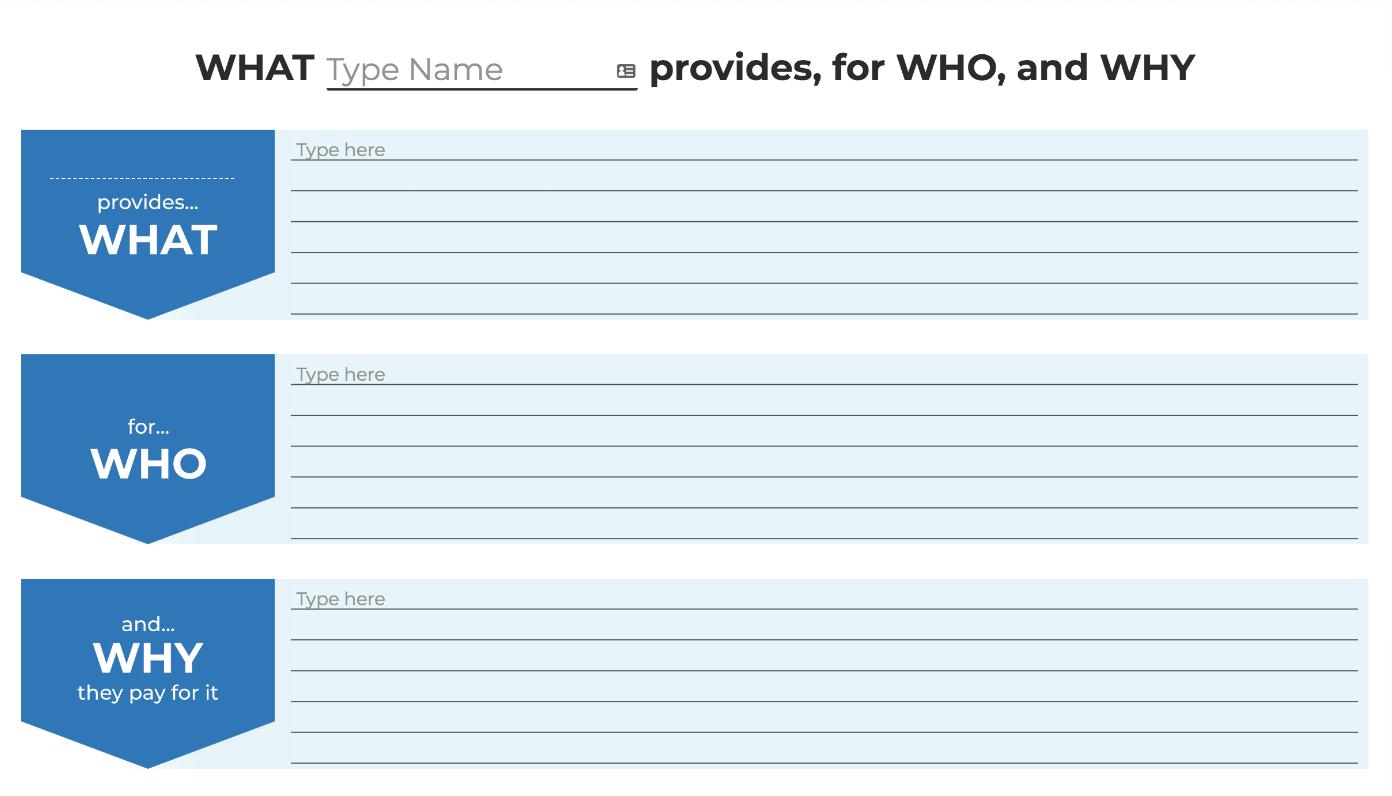Tool
Summary
MtL System Module 2:
Shows how to use the WHAT-WHO-WHY tool to communicate WHAT the organization provides, to WHOm, and WHY customers opt to purchase from the organization.
MtL Tutorial Module 2:
Provides background, instruction, practice cases, and input prompts that prepare leaders to use the WHAT-WHO-WHY Tool and Method.
Summary:
It is a fundamental truth that an organization exists to solve a problem for a population of people who have that problem.

This truth begs the following questions:
- WHAT does the organization provide?
- WHO buys what the organization provides?
- WHY do customers choose to buy from the company?
And, most importantly, does everyone in the organization, especially those running it, share the same understanding of their WHAT-WHO-WHY? Further, just as organs in a body must work together to keep a person alive, company organizational units also need to be aligned.
Achieving clarity around the company’s WHAT-WHO-WHY is essential to the efficient execution of strategy and growth plans. That’s why “Get Clear” is the first step in the IntelliVen Manage to Lead System for improving organization performance.
The “Power of Clarity” lies not just in a shared understanding of the company’s strategy but also in how that understanding shapes execution and results in superior performance.
The W-W-W template provides a simple way to visualize the central questions on which your team must be aligned:
“What do we provide, to who, and why do they buy it from us?”
All organizations – and especially businesses – should get and stay crystal clear about whose problem they solve.
Yet it is common for leaders to describe their organizations in terms of one or two but not all three dimensions. That’s because thinking about the three dimensions of market, problem, and solution all at the same time challenges the mind. It is hard for most people to think about all three for any length of time.
While it may at first seem simple or obvious, it is usually surprisingly difficult for leaders to sort out and agree on how to describe all three dimensions. Employee surveys invariably reveal that the most urgent need across the organization is to get a better handle on: “Who are we and what do we do?”
Top leaders may themselves be clear about one or two of the three dimensions but do not realize that it is critical to be clear about all three. There simply is no point during standard day-to-day operations that forces leaders to compare and reconcile their understandings of the organization’s what, who and why.
But when leaders know and articulate the problem their organization solves for whom, it helps them and everyone else in the organization individually, and collectively, to perform better.
Organizations that have developed a purpose, mission, vision, and an “elevator pitch” may have already answered the question: “Whose problem do we solve?” If not, however, then the mission, vision, and elevator pitch should be revised, or a separate effort undertaken, to clarify the three dimensions.
Complete the W-W-W Exercise at this link to submit WHAT your organization provides to WHO and WHY customers buy it from you. Submissions will be returned with input on clearity, specificity, and suggested upgrades for individual entries. A suggested consolidated version will be returned for multiple entries from the same organization.
Watch this 2:56′ video introduction to the W-W-W:
Repeat and iterate with stakeholders (board members, investors, next-level managers, employees, customers, partners, etc.) until the consolidated W-W-W has stabilized. Run with it as the backbone of communications until it needs to change as the organization evolves.
Case study on how IntelliVen used the WHAT-WHO-WHY tool and method to enable Compusearch to achieve better team alignment and more effective operations.
NOTE
Far more important than getting the W-W-W right is getting it the same across all leaders. Once leaders agree on the same W-W-W they can work to improve and optimize it over time as described in the clip below.
SEE ALSO
Complete this exercise with your team to clarify your organization’s W-W-W.

